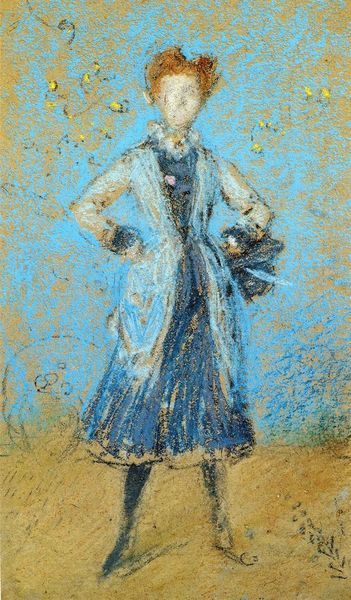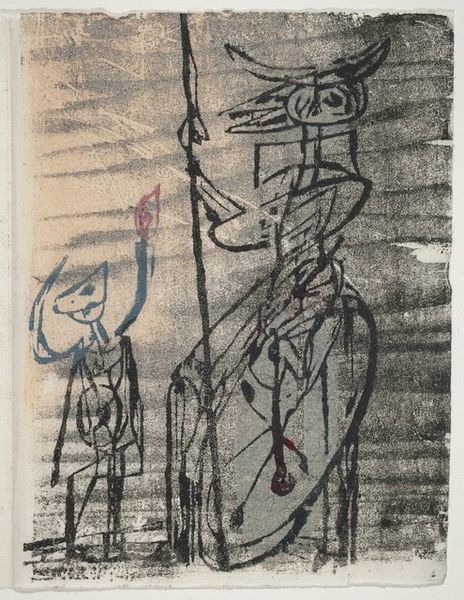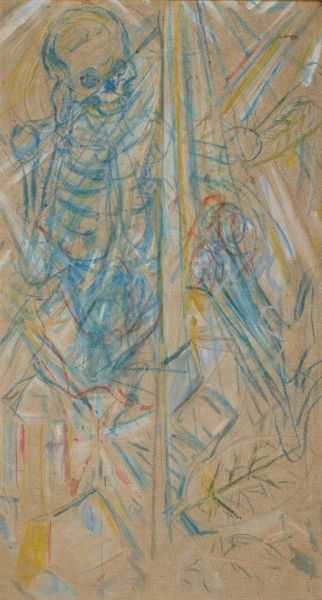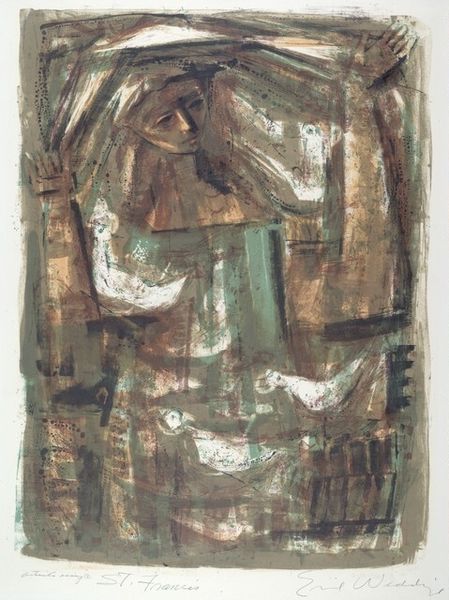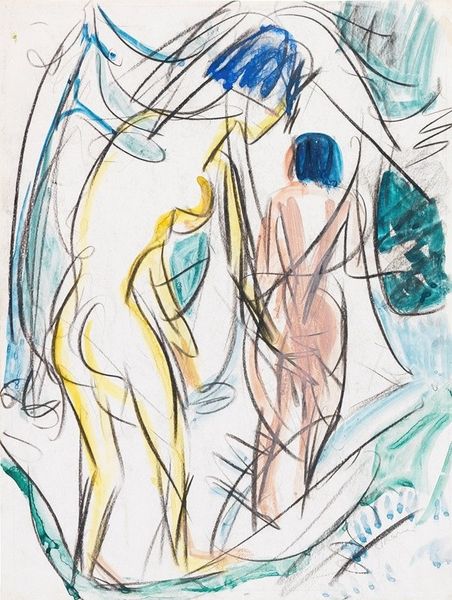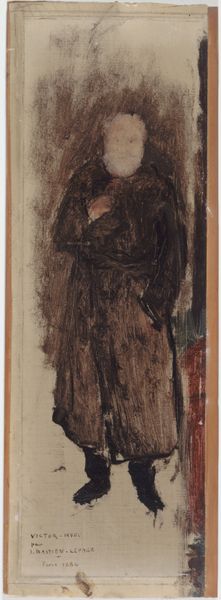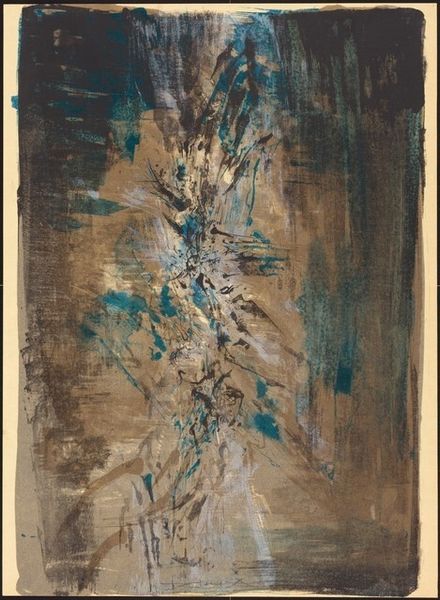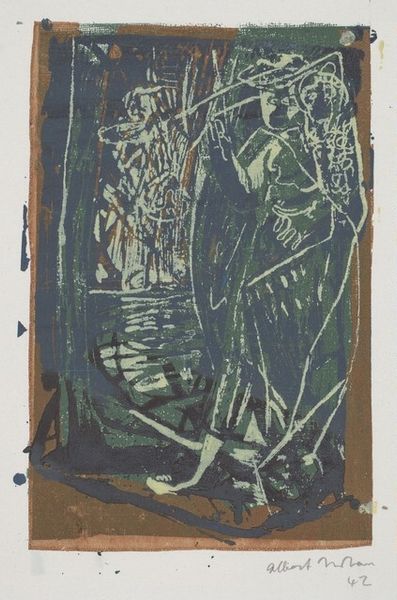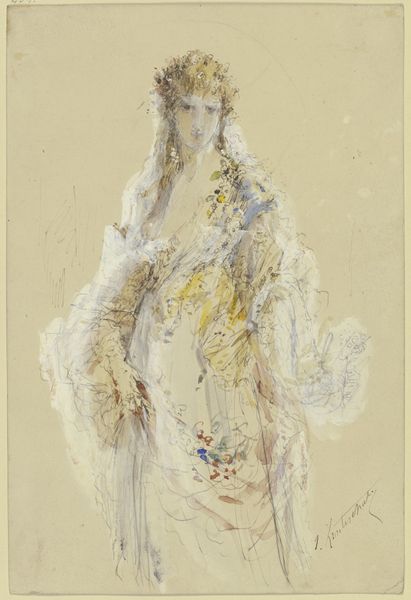
drawing, paper, watercolor, pencil
#
portrait
#
drawing
#
figurative
#
water colours
#
impressionism
#
landscape
#
figuration
#
paper
#
watercolor
#
pencil
#
symbolism
#
watercolour illustration
Copyright: Public Domain: Artvee
Editor: This is James McNeill Whistler’s "Morning Glories," likely created between 1871 and 1873. It’s a delicate piece using watercolor and pencil on paper. I’m struck by the pastel shades and the overall dreamy atmosphere. What do you see in this piece from your perspective? Curator: I see a distinct interplay between process and material. Look at how Whistler manipulates watercolor, traditionally a medium of transparency, to create opacity and texture. The paper itself isn't just a passive surface; it actively participates in the image. What social conditions would compel an artist to challenge accepted modes of applying materials? Editor: That’s a fascinating question. Are you suggesting the unconventional application of materials hints at a deeper context? Curator: Absolutely. Consider the industrial revolution: mass-produced materials became more accessible. Simultaneously, there was a growing fascination with Japanese art. Did mass production techniques influence this aesthetic in any way? How does Whistler respond to changes in his cultural landscape and class biases with a so-called ‘fine art’ technique and process? Editor: So, by choosing and manipulating these materials, he’s not just creating an image, but also engaging in a dialogue with the changing world around him. Curator: Precisely! He's commenting on production, value, and the shifting definitions of "high art." The morning glories themselves could be symbols related to ideas on production as well. Editor: That really shifts how I see the work. I was focused on the aesthetic, but understanding the "how" and "why" behind the materials and processes adds so much more depth. Curator: It’s about acknowledging the means of production and their impact on artistic expression. Editor: I will definitely think about the material and labor implications in artwork from now on.
Comments
No comments
Be the first to comment and join the conversation on the ultimate creative platform.

